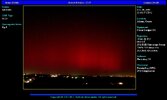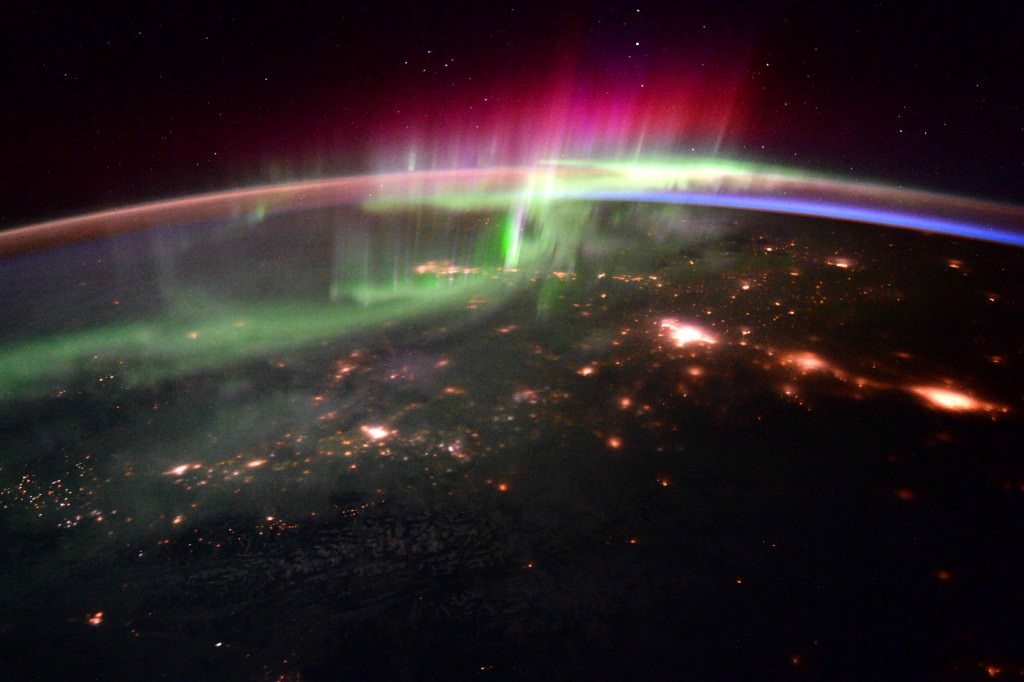Trying to look up low-latitude auroras, it appears the red colour is from oxygen and higher above the Earth than greenish auroras.
It appears in the images that the aurora light in Turkey is closer to the horizon, than the images from Austria. A light at an altitude of 464 km, taking the number from the article, though all we know is that "Observed red color coincides with a high altitude aurora;" would be visible from even far away. In other words, if one is that high above the surface of the Earth, the horizon of the Earth is more than 2600 km away. That is what I got using this calculator Distance to Visible Horizon Calculator | Calculate Distance to Visible Horizon
Here is an image that shows how the colours vary with altitude:

And another which gives a limit of 800 km for the red auroras:

It is possible that recent rain following low pressure systems from the Atlantic has cleared the atmosphere over Europe of dust and made the display more spectacular than it would have been, had it happened in the heat of summer.
Low energy electrons produce red aurora where the 630.0 nm oxygen O(1D) emission is stronger than other emissions. Because of the nature of the O(1D) emission these auroras are located at very high altitudes (200-1000 km).
Low latitude Aurora
Low latitude auroras are extremely rare. In this work, we study the aurora observed on November 14 and 15, 1789. For this event, relationship between sub-zenith point (overhead) and southernmost point is 30°/17°, further south of the aurora that occurred after the Carrington event in 1859 (41°/20°). This was the first low latitude aurora to be studied. This study was carried out by three Mexican scientists:Antonio de León y Gama, José Antonio Alzate and Francisco Dimas Rangel. In our work, we use their observations and reproduce their calculations. Our conclusions are: a) Aurora’s height was greater than 464 km; b) Observed red color coincides with a high altitude aurora;
- Nov 2020
(13) (PDF) Low latitude Aurora. Available from: https://www.researchgate.net/publication/345257666_Low_latitude_Aurora [accessed Nov 06 2023].
It appears in the images that the aurora light in Turkey is closer to the horizon, than the images from Austria. A light at an altitude of 464 km, taking the number from the article, though all we know is that "Observed red color coincides with a high altitude aurora;" would be visible from even far away. In other words, if one is that high above the surface of the Earth, the horizon of the Earth is more than 2600 km away. That is what I got using this calculator Distance to Visible Horizon Calculator | Calculate Distance to Visible Horizon
Here is an image that shows how the colours vary with altitude:
And another which gives a limit of 800 km for the red auroras:
It is possible that recent rain following low pressure systems from the Atlantic has cleared the atmosphere over Europe of dust and made the display more spectacular than it would have been, had it happened in the heat of summer.




